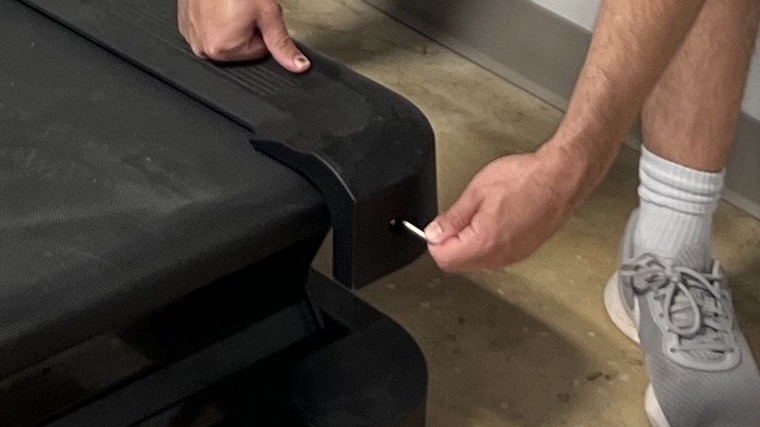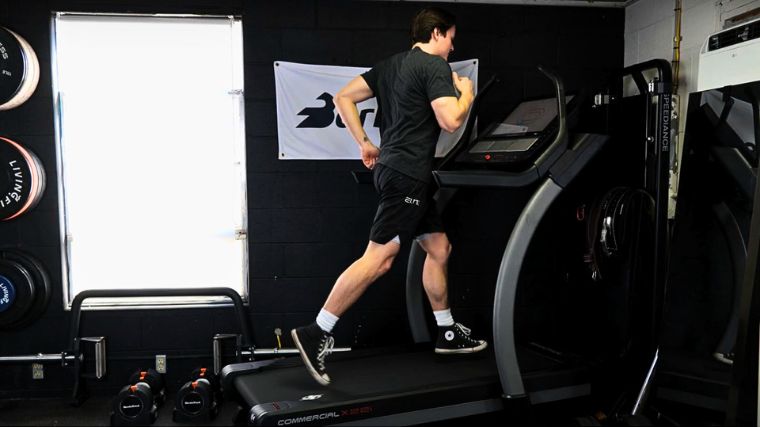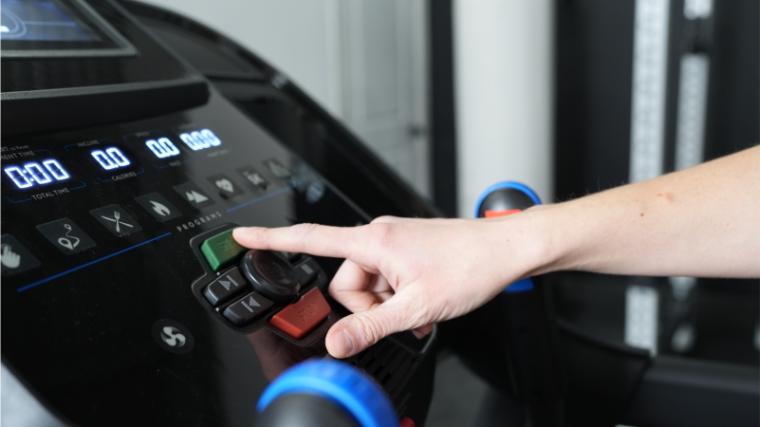Setting up a treadmill in your home gym can make improving your cardiovascular health and chasing your fitness goals that much easier. However, it also requires a level of responsibility and commitment in order to properly care for this expensive piece of fitness equipment. Part of this responsibility is to create and follow a preventative maintenance schedule. Consistent cleaning and regular maintenance can go a long way towards extending the machine’s lifespan and preventing injuries. .
Unfortunately, it doesn’t guarantee that you won’t ever hit roadblocks. Even the best treadmills will have issues from time to time. In some cases, you will be able to reference the owner’s manual to troubleshoot these problems. In others, you might have to contact a treadmill doctor. In this guide, we’ll identify some common treadmill problems and a few troubleshooting tips.
Common Treadmill Belt Problems
Over a treadmill’s lifespan, it’s likely you’ll experience issues with the walking belt. This is largely due to the wear and tear associated with regular usage. Ignoring treadmill belt issues can significantly damage the machine and create hazards for users.
Common Issues
- Frayed, ripped surface
- Belt slipping
- Misalignment
- Friction
- Burning smell
Potential Dangers
If your treadmill belt is not regularly cleaned, lubed, tightened, and aligned, it could lead to significant repairs or, even worse, serious injuries. A compromised treadmill belt can cause users to slip, trip, or lose balance, which can lead to burns, scrapes, or broken bones.
According to the U.S. Consumer Product Safety Commission, more than 22,000 treadmill injuries resulted in hospital emergency room visits in 2019. (1)
Troubleshooting
Before attempting to address any running belt issues, it’s important to consult your owner’s manual for troubleshooting tips and tools needed to fix these issues. For example, most user manuals will have troubleshooting steps for common treadmill problems like how to adjust a treadmill belt.

To check the belt’s lubrication, alignment, tension, and overall condition, you will need to go to the rear of your machine and loosen the belt screws with an Allen wrench or screwdriver. From there, you can feel underneath the belt to see if there’s a lack of lubrication or an accumulation of dirt and debris.
At this point, make sure the belt is properly aligned on both sides of the treadmill. Additionally, take a look at the rollers to see if there’s any structural damage or an accumulation of debris. When tightening the belt screws, make sure you can still lift the belt up about 2 to 3 inches from its resting position on the deck.
Common Treadmill Motor Problems
The treadmill motor is the heart and soul of your cardio machine. Unfortunately, it can also wear down over time. The motor may be in need of some TLC if you’re encountering the below issues.
Common Issues
- Belt won’t move
- Erratic speed
- Incline not working
- Unusual noises during use
- Burning smell
Potential Dangers
Any unexpected change in speed or power during treadmill usage can cause a user to fall and sustain serious injuries. Additionally, treadmill motor issues can also lead to overheating or sparks, which can cause a fire.
Troubleshooting
“Treadmills are generally tech-heavy, complex machines,” notes BarBend expert reviewer Amanda Capritto, and the treadmill motor and its accompanying electrical components are perhaps the most resistant to DIY fixes.
The first step is to remove the safety key, shut off the power, and unplug the cord from the power source. Next, consult your owner’s manual to see how difficult it is to access your treadmill motor.
If you don’t have any prior experience working with electrical wiring or sensitive components like a motor control board, then it’s highly recommended to hire a technician. Additionally, attempting to repair the motor on your own could cause more damage and violate your warranty.
Common Treadmill Speed Problems
When running on a treadmill, you may encounter issues with speed — both literally and figuratively. Considering you didn’t buy a treadmill just to stand on it, you’re going to want to figure out a solution.
Common Issues
- Erratic speeds
- Not reaching max speed
- Friction between belt and deck
- Hitching during transitions
Potential Dangers
Erratic speeds can cause users to lose their balance and potentially suffer injuries. If you ignore it and it’s an issue with the motor, power supply, or electrical components, it could lead to overheating and potential fire hazards.
[Related: Tips for Getting Your Home Treadmill Repaired]
Troubleshooting
Check the owner’s manual to see what the recommended speed setting is for your treadmill. Set the treadmill at that speed, but do not get on the machine. Stand to the side and observe what happens. If the treadmill stops or doesn’t even turn on, check for any visible damage to the power cord. If you don’t see any cord damage, make sure the treadmill is plugged into a dedicated outlet and not an extension cord or power strip. That may fix the issue.

If the power turns on but the belt is slipping or hitching, it could be an issue with the belt. It may be misaligned, lacking lubrication, or needing a tension adjustment. These problems require a thorough examination of the belt, as you might need to clean, lube, properly align, tighten, or outright replace the running belt.
Another possibility is that the treadmill’s speed sensor is dirty or misaligned. After locating it near the motor or belt, give it a wipe down and make sure it’s aligned with the speed sensor magnet on the flywheel.
If you’re still encountering issues, then the issue could be an electrical one with the motor or outlet. At this point, it’s recommended that you contact a technician.
Common Treadmill Console Problems
You won’t find a console on every type of treadmill, but many will have either a touchscreen or an LCD or LED monitor that serves as the machine’s control panel. Here, you’ll find access to any onboard programming and metrics like distance, speed and heart rate. However, just like with any complex piece of technology, the console display can experience a range of problems.
Common Issues
- Flickering display screen
- Console freezes
- Error codes
- Unresponsive buttons or commands
- Doesn’t power on
Potential Dangers
A malfunctioning console can serve as a distraction during workout routines. It could also impact a machine’s speed or performance, all of which can lead to potential hazards like overheating or a loss of balance.
Troubleshooting
Like with a smartphone or computer, sometimes all it takes to fix a malfunctioning console is to power down your exercise equipment and then turn it back on in a few minutes. This cycling of power could allow for the console glitches to be fixed on their own.

Other console issues could require you to update your software or firmware and to make sure all cables are securely connected. If all else fails, you can perform a factory reset to address the console’s problems. If you’re unsure how to do that, check out our guide on how to reset a treadmill.
Preventative Maintenance
To ensure a long lifespan for your treadmill, it’s important to follow a regular maintenance schedule that includes the following cleaning and preventative maintenance tasks.
| Daily/Weekly | Wipe down high-touch surfaces like the handrails, console and frame Vacuum around, underneath and the treadmill mat |
| Bi-Monthly | Check the treadmill belt for any visible tears or fraying Make sure the belt is properly aligned Check the running belt’s tension: too loose or tight Remove all dirt, dust and debris from the treadmill motor Inspect the belt to see if it needs lubrication |
| Annual | Check to see if there’s any wear and tear to the rollers and bearings Examine all power cords and cables for any visible damage or loose connections |
When to Call a Treadmill Doctor
There’s no shame in admitting some treadmill problems are simply too complicated or difficult for you to troubleshoot. When this happens, it’s time to call a treadmill doctor.
In general, electrical or mechanical issues should be handled by an experienced technician. Not only can they diagnose and repair the problem, but their work could save you from violating the warranty by trying to perform a treadmill repair on your own.
Final Word
Over time, even the best commercial treadmills can experience issues with major components, like the belt, motor, and console. With that in mind, it’s important to remain vigilant with regular cleaning, maintenance, and observation of any abnormalities during use. In addition to this guide, keep your owner’s manual handy at all times to help you troubleshoot common problems.
Also, it’s helpful to do your research ahead of time to find highly reputable treadmill technicians, as professional services may be needed to repair your treadmill problems. Having a technician’s contact information already saved can help to reduce the stress of the situation and you can get your machine repaired in a timely manner.
Common Treadmill Problems FAQs
How do I know if my treadmill motor is bad?
A treadmill motor is the heart and soul of your exercise machine. Unfortunately, over time, a motor can malfunction and start to break down. Some common symptoms of a bad treadmill motor include intermittent power, erratic speeds, unusual noises during use, or a burning smell. If your treadmill is experiencing any of these symptoms, it may be time to call in a technician.
How do I know if my treadmill belt needs replacing?
There are a few ways to gauge whether or not you need to replace your treadmill belt. The first method is to visibly inspect the belt. If you see any rips, frays, or other signs of excessive wear and tear, then it’s likely time for a new belt. If belt slippage or misalignment is the issue, you may be able to fix the problem yourself with lubrication and a tension adjustment.
How often do you need to lubricate a treadmill?
It’s important for all owners to learn how to lubricate a treadmill and to make it a regular part of their preventative maintenance schedule. Ideally, you need to lubricate your treadmill belt every three months with a silicone-based treadmill lubricant.
References
- Radzicki McManus, M. (2024, February 22). Treadmills cause thousands of injuries each year. Here’s how to use one safely. CNN. https://www.cnn.com/2024/02/22/health/treadmill-safety-avoid-injury-wellness/index.html